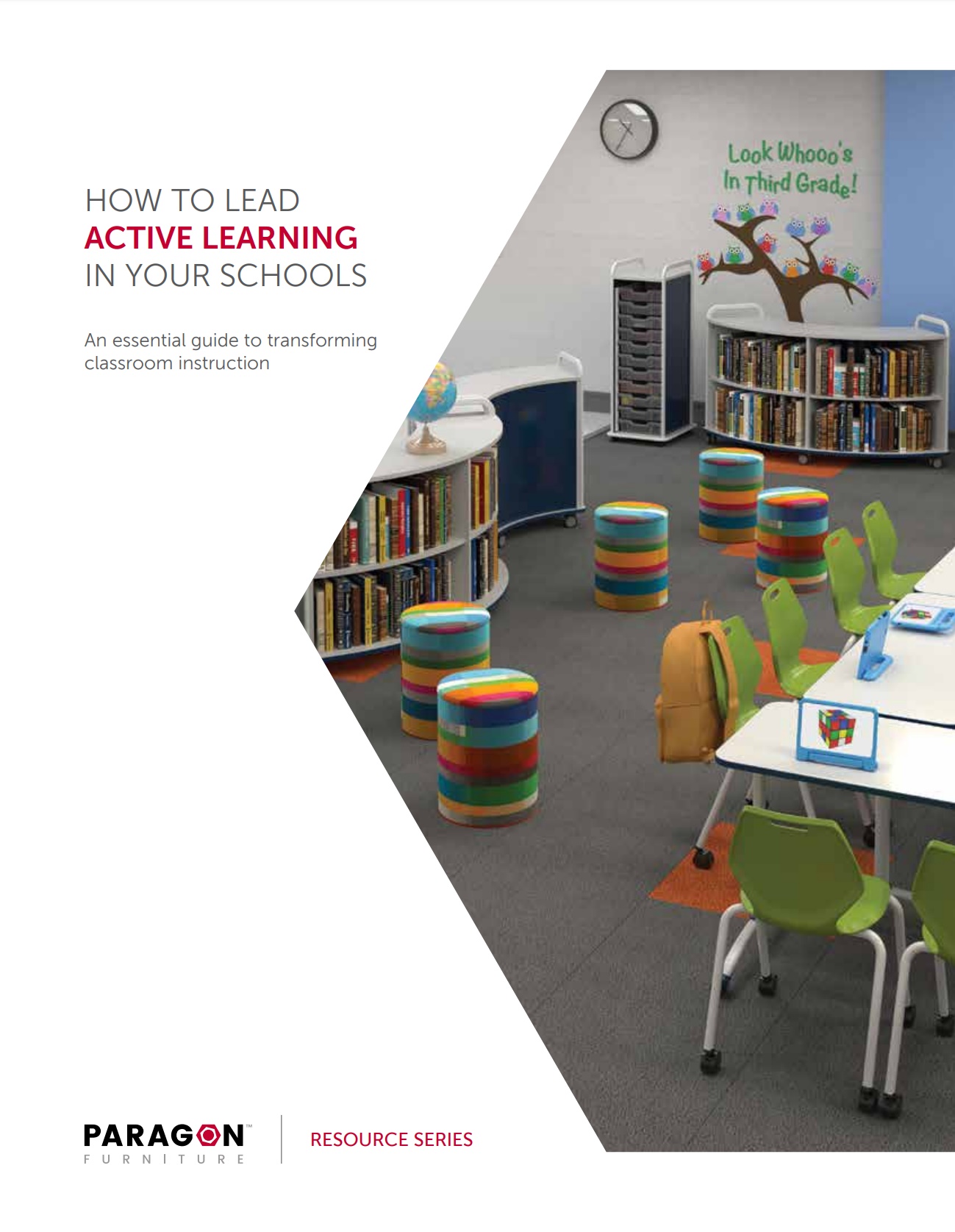designing classrooms for focus
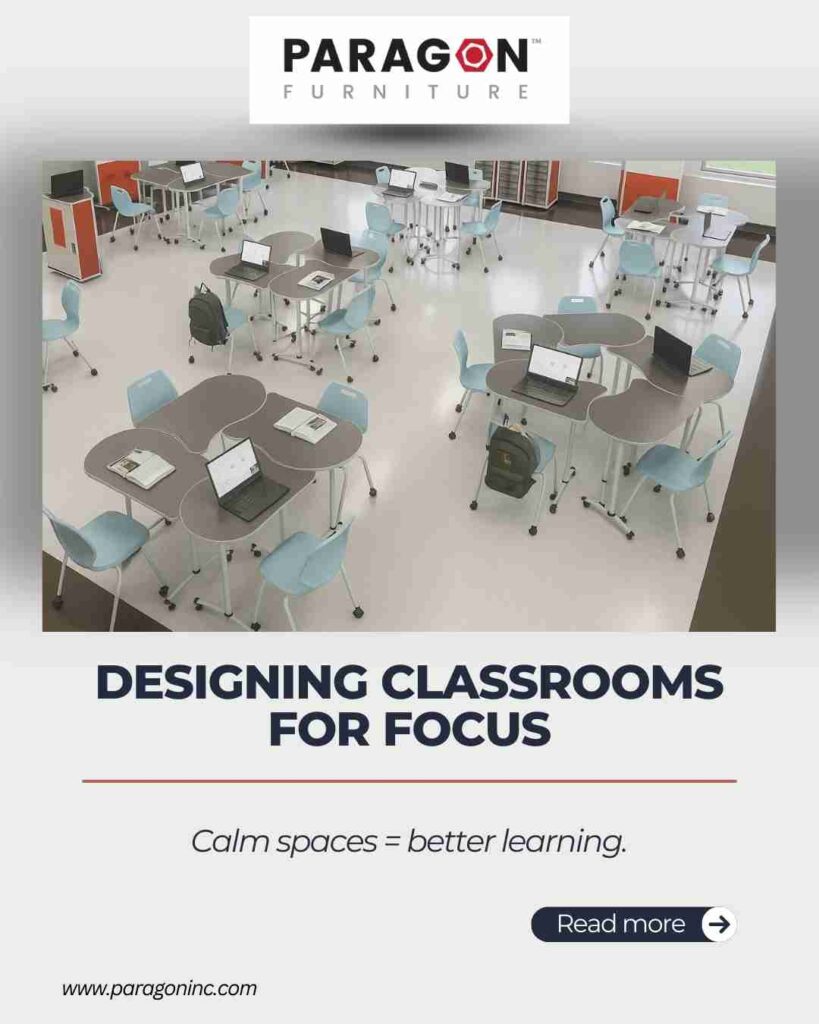
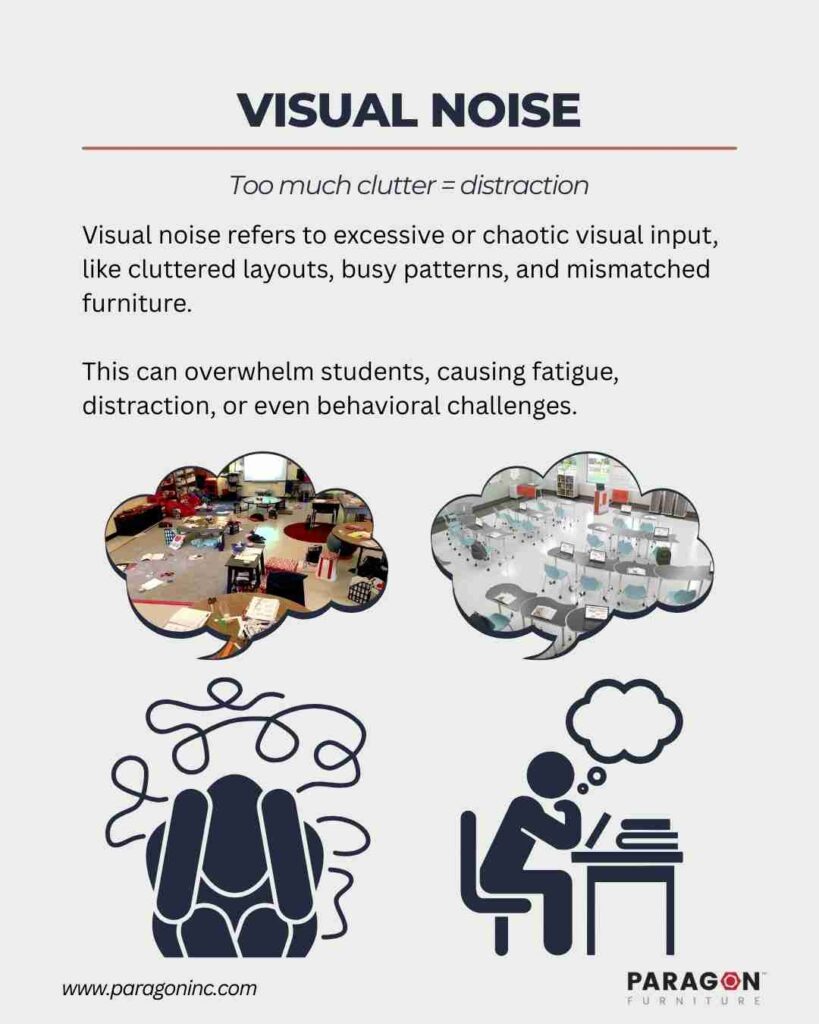
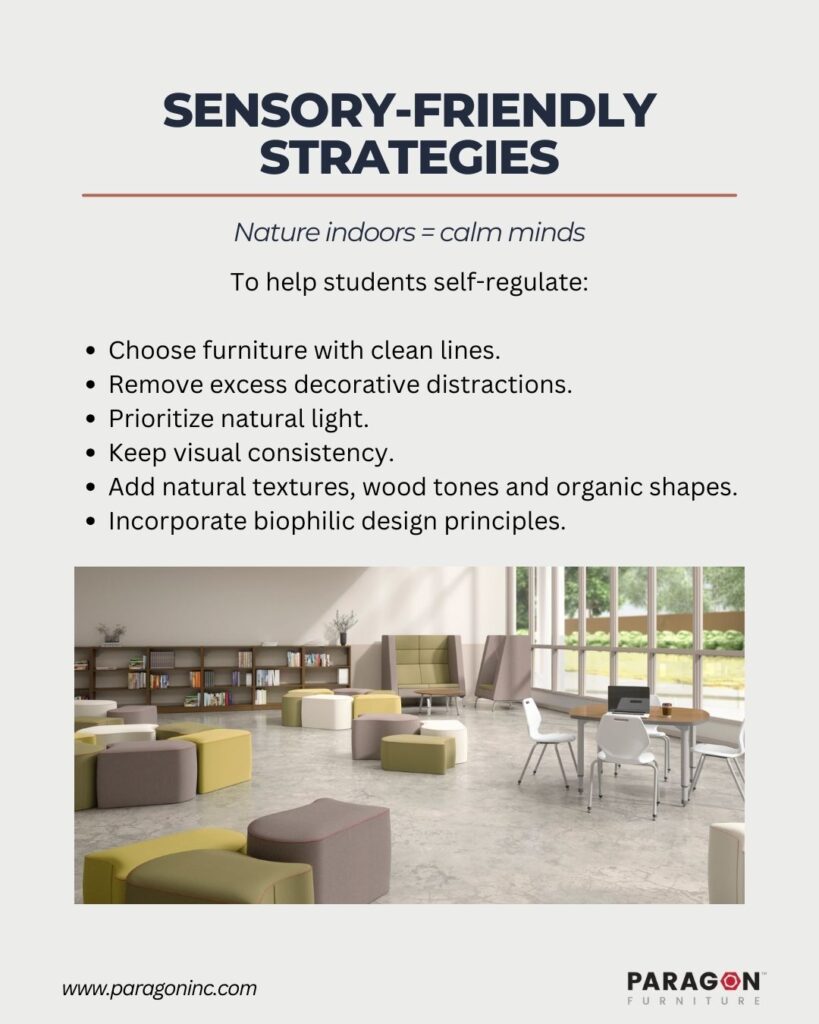
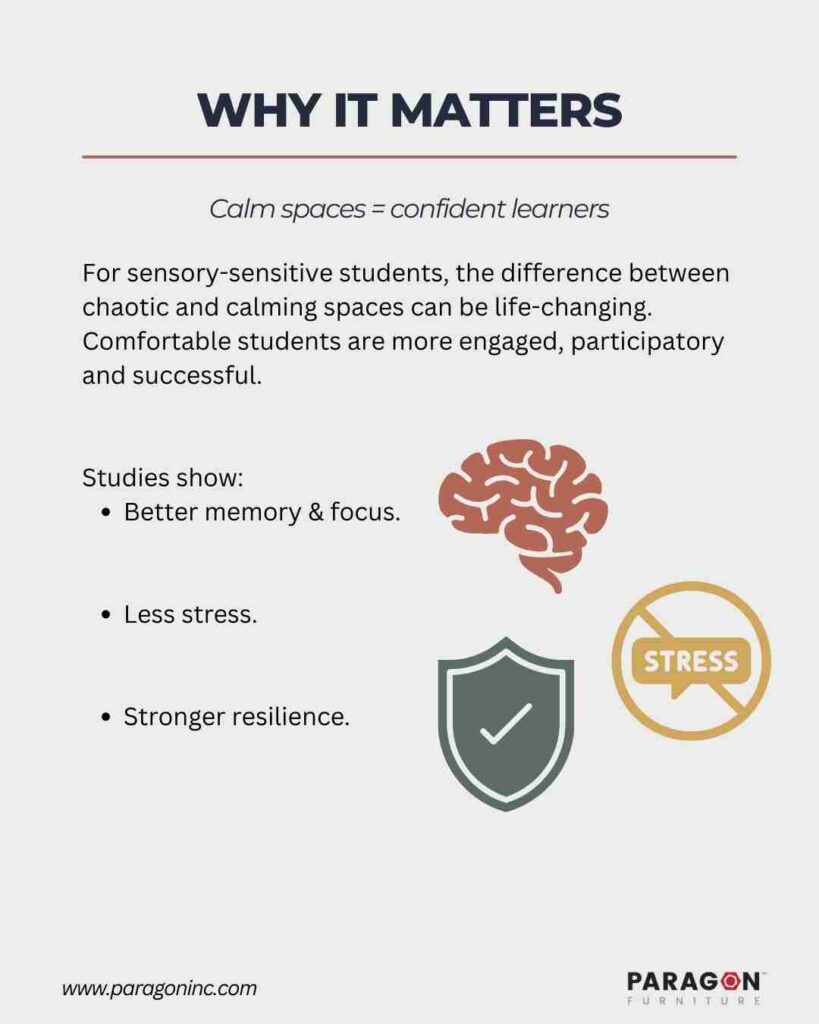
What Is Visual Noise and Why It Matters
Visual noise refers to the overwhelming or chaotic visual stimuli, cluttered displays, busy patterns, mismatched furniture, or excessive decoration. Its impact is more than aesthetic; it can impair attention, increase cognitive load, and disrupt learning.
Effects on younger children: Research has shown that toddlers in chaotic home environments had difficulty visually identifying complex objects. In one study, children whose surroundings were more orderly were better able to focus on a target object, especially when irrelevant items were minimized. Similarly, 3-year-olds learning from overly flashy e-books performed worse in comprehension and memory tests compared to children using simplified versions.
Impacts on older students: Visual clutter can lead to cognitive fatigue and distraction, reducing capacity for sustained attention and learning.
Key takeaway: Reducing visual noise doesn’t require sterile environments, it means creating clarity and order so that students’ attention naturally focuses on what matters.
References and Further Reading:
GUEST POST: Visual “Noise”, Distractibility, and Classroom Design — The Learning Scientists
Sensory Friendly Design Strategies
To cultivate environments that support self-regulation and focus, consider these strategies rooted in sensory-aware designs:
Simplify Furnishings: Choose furniture with clean lines and open forms to reduce visual distraction.
Declutter Visuals: Limit decorative elements that compete for attention; focus on functional simplicity.
Emphasize Natural Light & Consistency: Natural lighting balances visual interest and calm. Visual consistency in fixtures, colors and layout help reduce cognitive effort.
Incorporate Nature-Inspired Elements: Natural textures, wood tones, and organic shapes offer comforting sensory input and visual cohesion.
Customize Acoustics and Lighting: Proper acoustic treatments and thoughtfully layered lighting support sensory comfort and cognitive performance, impacts particularly significant for students with sensory sensitivities or attention challenges.
References and Further Reading:
Classroom Acoustics and Lighting: A Complete Guide to Sensory-Friendly Spaces – Dr. Matthew Lynch
The Power of Biophilic Design
Biophilic design leverages our innate affinity for nature, to enhance well-being and performance in built environments.
What Is It? According to architectural theory, biophilic design can involve direct nature (e.g., plants, water, sunlight) and indirect nature (e.g., natural textures, biomorphic patterns, natural geometries).
Why It Works: Attention Restoration Theory shows that natural elements (like tree canopies, flowing water or natural light) help recharge attention and reduce mental fatigue. Even views or immersive experiences of nature support focus and emotional recovery.
Evidence In Schools:
Case Studies From Schools (2024): A study at Bethel Hanberry Elementary showed that biophilic classrooms reduces stress, improved test scores, lowered absenteeism, diminished behavioral referrals, and boosted teacher retention.
VR-Based Findings (2023): Even in stimulated classrooms, students reported lower perceived stress and a feeling of connection with nature when biophilic elements were present.
Global Insights: Many educational settings adopting biophilic design principles report improvement in cognition, mood, attention and mental resilience.
References and Further Reading:
https://eepro.naaee.org/research/eeresearch/outcomes-biophilic-design-schools?
The Power of Biophilic Design in Learning Spaces: What, How, and Why? – EDspaces
Acoustic & Lighting Design: Foundations for Focus
Acoustics: Multiple studies confirm that poor acoustic environments, characterized by high background noise, excessive reverberation, and poor speech intelligibility, negatively affect learning, particularly for young children or those with language processing challenges. Symptoms include discomfort, headaches, reduced attention, and diminished well-being.
Lighting: Light impacts not just visibility, but also mood, cognition, and physiological state. Optimal lighting parameters include:
- Natural daylight access for circadian rhythm regulation.
- Neutral color temperatures (around 4000-5000 K) for focus.
- High color rendering for accurate perception and comfort.
Adequate lighting boosts alertness, memory, concentration and overall engagement.
References and Further Reading:
Inclusive Classrooms: Learning Through Design
Sensory- aware and biophilic design isn’t just for those with documented sensitivities, it elevates learning for everyone.
Well-being as a Foundation: Student well-being is essential for learning. Disordered environments erode well-being, especially primary learners, where early experiences shape cognitive development.
Universal Design Strategies: Tactics like flexible seating, quiet zones, and sensory-friendly study spaces support diverse needs and promote equity.
Student Involvement Matters: Some schools engage students directly, conducting sound audits or design workshops, to help make spaces more inclusive and sensitive to sensory dynamics.
References and Further Reading
The Unseen Classroom Struggle: When Noise Becomes a Barrier to Learning
Quiet the Overload: Managing Sensory Chaos | California State University Long Beach
Download our step-by-step implementation guide to help create active learning spaces!
